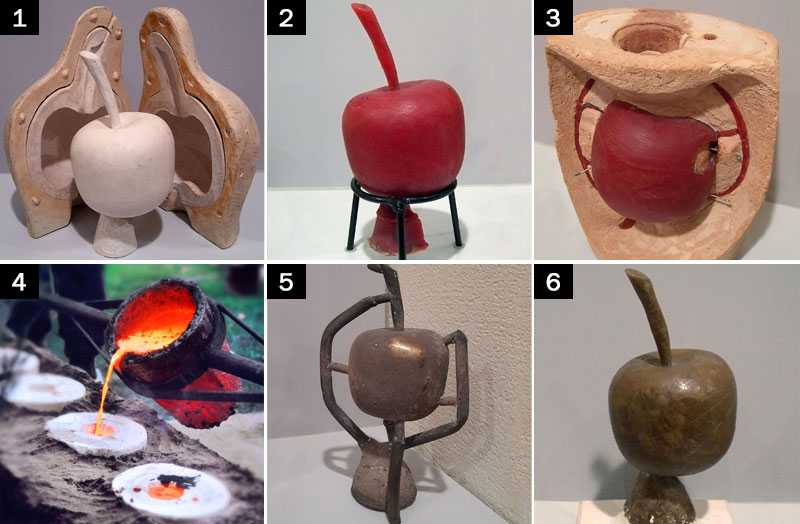Lost Wax Casting
Contents |
[edit] What is lost wax casting?
Lost wax casting is a metal casting technique that utilises wax moulds to create intricate, detailed metal structures. Also known as cire perdue or precision casting, molten metal is poured into casts created from wax sculptures. Lost wax casting allows the creation of thin walls and lightweight components.
[edit] Lost wax casting process
Casting metal components using the lost wax casting process allows you to create precise components with difficult structures:
- A wax model is created. This model can only be used once. Large scale productions 3D print prototypes for quick results.
- Once the wax model has been created the cast must be created. This can be done in a number of ways. A popular technique is to surround the wax mould in plaster until it solidifies.
- The wax-plaster mixture is then heated up so the wax melts and can be removed from the cast.
- Molten metal is then poured into the mould until it has solidified.
- The plaster is then removed leaving the metal structure. From there the metal component is then machined and trimmed to the desired shape.
[edit] History of lost wax casting
This form of metal casting is first recorded 6,000 years ago, used by the Indus Valley Civilization to create a copper, wheel-shaped amulet. Early practises used wax from beehives to create the desired structure. In ancient Athens, they used to use clay moulds to create casting for statues and jewellery.
[edit] Positives and negatives of lost wax casting
Positives:
- It can be used to create complex shapes, with very delicate features.
- It can save material waste and can be used for mass production.
- It can cast any material with very few restrictions, such as aluminium, magnesium, copper, and steel.
- It can be used for rapid, low-cost production.
Negatives:
- It cannot produce large components.
- It requires a large amount of preparation and specialist equipment.
- It is a more complicated method compared to other casting processes.
[edit] Related articles on Designing Buildings
- Accessories cast into in situ concrete.
- Aluminium.
- Bronze.
- Cast iron.
- Cast metal components.
- Cast plate.
- Cast-in-place concrete.
- Cast-iron.
- Copper.
- Difference between cast iron and wrought iron.
- Failure of cast iron beams.
- Ferrous.
- Iron.
- Major cast metal components.
- Metal fabrication
- Metalwork.
- Pre-cast concrete.
- Soldering.
- Steel.
- Tin.
- Types of metal.
- Types of steel.
Featured articles and news
Amendment to the GB Energy Bill welcomed by ECA
Move prevents nationally-owned energy company from investing in solar panels produced by modern slavery.
Gregor Harvie argues that AI is state-sanctioned theft of IP.
Heat pumps, vehicle chargers and heating appliances must be sold with smart functionality.
Experimental AI housing target help for councils
Experimental AI could help councils meet housing targets by digitising records.
New-style degrees set for reformed ARB accreditation
Following the ARB Tomorrow's Architects competency outcomes for Architects.
BSRIA Occupant Wellbeing survey BOW
Occupant satisfaction and wellbeing tool inc. physical environment, indoor facilities, functionality and accessibility.
Preserving, waterproofing and decorating buildings.
Many resources for visitors aswell as new features for members.
Using technology to empower communities
The Community data platform; capturing the DNA of a place and fostering participation, for better design.
Heat pump and wind turbine sound calculations for PDRs
MCS publish updated sound calculation standards for permitted development installations.
Homes England creates largest housing-led site in the North
Successful, 34 hectare land acquisition with the residential allocation now completed.
Scottish apprenticeship training proposals
General support although better accountability and transparency is sought.
The history of building regulations
A story of belated action in response to crisis.
Moisture, fire safety and emerging trends in living walls
How wet is your wall?
Current policy explained and newly published consultation by the UK and Welsh Governments.
British architecture 1919–39. Book review.
Conservation of listed prefabs in Moseley.
Energy industry calls for urgent reform.

























